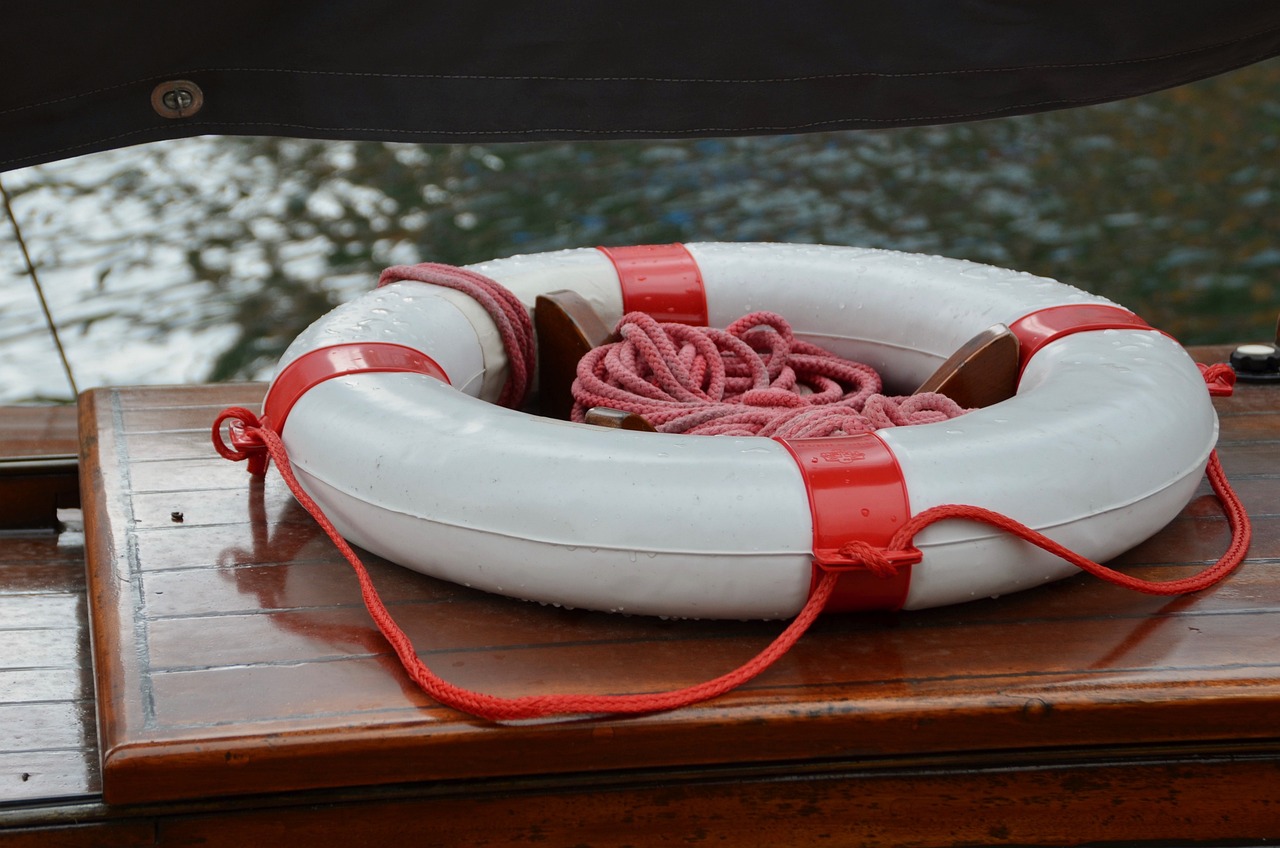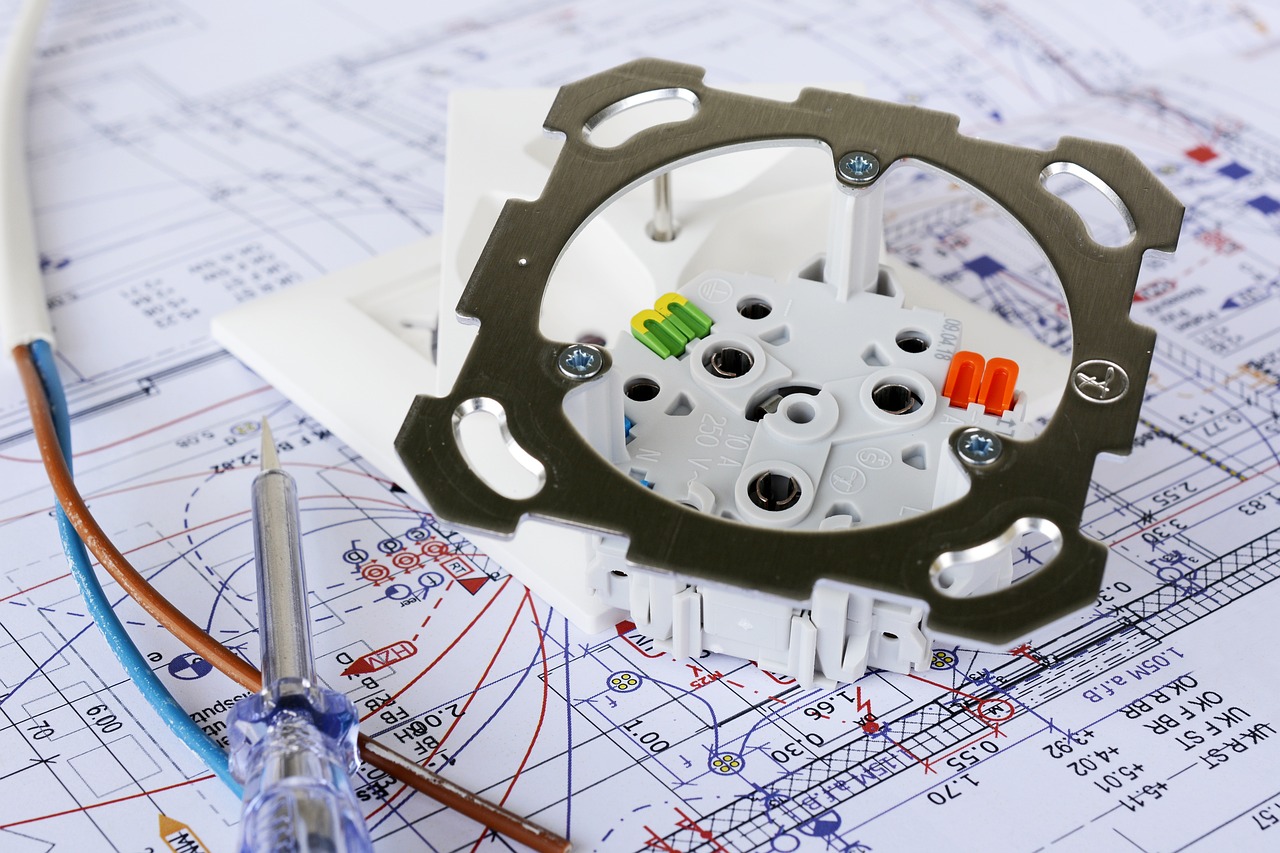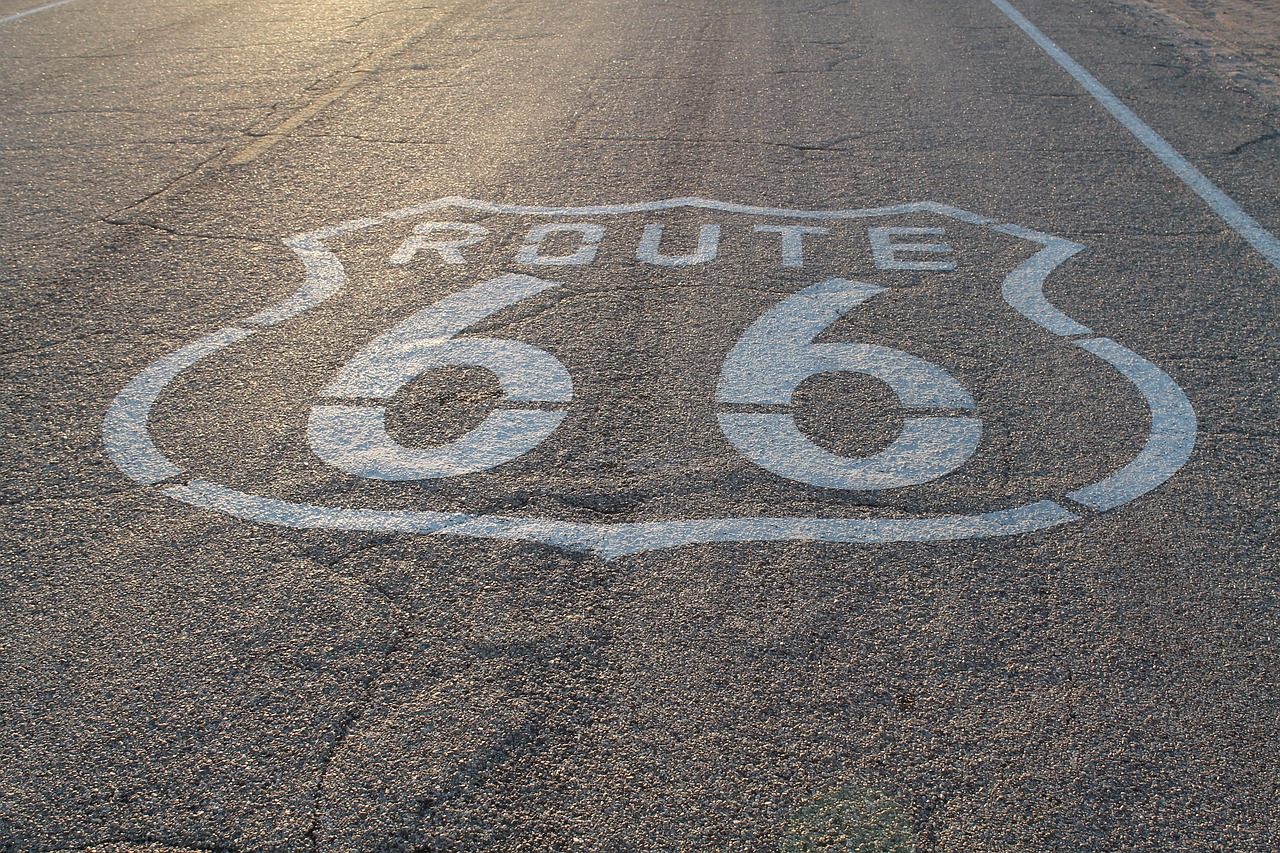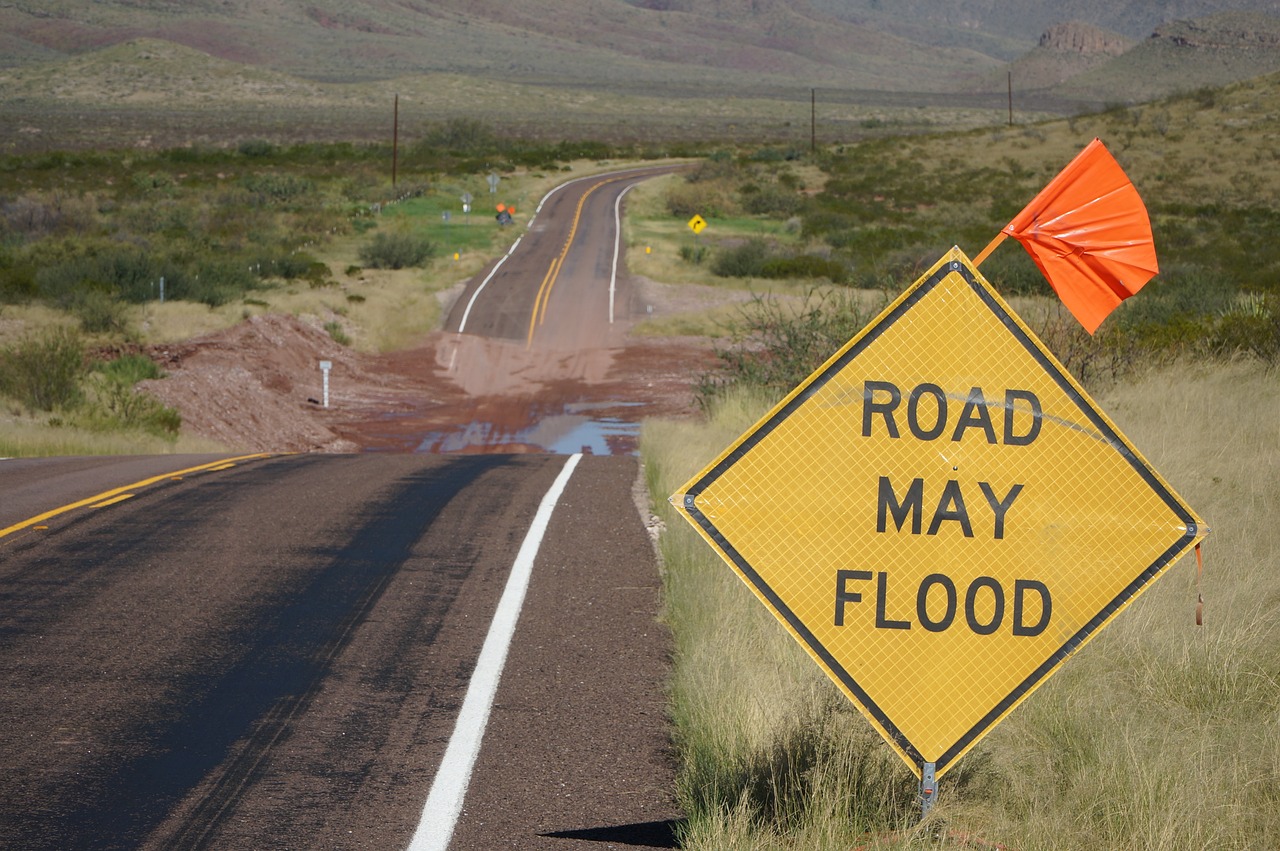How to Evacuate Safely During a Disaster
Evacuating during a disaster can be a daunting experience, but being prepared can make all the difference. Imagine you're in the middle of a storm, and suddenly the power goes out. Your heart races as you realize the gravity of the situation. What do you do next? The key to navigating such emergencies is having a solid evacuation plan in place. This article provides essential guidelines and tips for ensuring a safe and effective evacuation during various types of disasters, helping you to protect yourself and your loved ones.
A well-defined evacuation plan is crucial during emergencies. It's like having a map in a foreign city; without it, you could easily get lost. An effective evacuation plan should include several vital components:
- Escape Routes: Know the quickest and safest paths out of your home and neighborhood.
- Communication Strategies: Establish how you will communicate with family members during a crisis.
- Designated Meeting Points: Choose a safe location where everyone can gather if separated.
By planning ahead, you can reduce panic and confusion when seconds count. Remember, it’s not just about knowing where to go; it’s about having a clear strategy to get there.
An emergency kit is vital for survival during a disaster. Think of it as your lifeline when chaos strikes. Having the right supplies can mean the difference between safety and vulnerability. So, what should you include in your kit? Here’s a breakdown of essential items:
Your emergency kit should be tailored to your family’s needs, but some must-have items include:
- Food: Non-perishable items that can sustain you for at least three days.
- Water: At least one gallon per person per day for at least three days.
- First Aid Supplies: A comprehensive first aid kit for treating injuries.
- Personal Documents: Copies of important documents like IDs, insurance, and medical records.
Choosing the right food and water is critical. Opt for non-perishable food items like canned goods, granola bars, and dried fruits. When calculating water needs, consider the following:
| Family Member | Daily Water Requirement |
|---|---|
| Adults | 1 gallon |
| Children | 0.5 - 1 gallon |
| Pets | 0.5 gallon |
Ensure you have enough supplies to last at least three days, as evacuation routes can become congested and unpredictable.
Don't underestimate the importance of a first aid kit. This small bag can be a lifesaver, containing essentials for treating cuts, scrapes, and other injuries. Additionally, if you or a family member takes medication, include a supply of necessary prescriptions in your kit. It’s crucial to manage health conditions even in the midst of chaos.
Staying updated on disaster alerts and warnings is essential. Reliable information sources can guide you during emergencies. Make sure to:
- Sign up for local emergency alerts.
- Follow local news channels on social media.
- Download emergency preparedness apps.
Being informed means you can make quick decisions based on the latest information, which can be life-saving.
Knowing your evacuation routes and transportation options can save lives. Just like you wouldn't set off on a road trip without a map, you shouldn't head out in an emergency without a plan. Familiarize yourself with the safest routes in your area, considering factors like:
- Traffic patterns
- Potential hazards
- Accessibility for all family members
When planning your escape, it’s essential to identify the safest routes in your area. Check local maps and online resources to pinpoint highways, back roads, and evacuation routes designated by local authorities. The goal is to avoid congested areas and potential hazards.
Explore various transportation methods available during an evacuation. While personal vehicles are often the most convenient, consider public transport options and community resources. Knowing your alternatives ensures you won't be stranded if your primary option becomes unavailable.
Pets are family too, and they need to be included in your evacuation plans. Just like you wouldn’t leave a child behind, ensure your furry friends have a spot in your emergency strategy. Preparing for their needs is just as important as your own.
Find out how to prepare your pets for an emergency evacuation. Pack a separate bag for your pets that includes food, water, medications, and any comfort items like toys or blankets. Ensure they have proper identification, such as a collar with tags or a microchip.
During an evacuation, it’s crucial to know where you can find pet-friendly shelters. Many disaster relief organizations provide resources for pet owners. Check online for local shelters that accept pets or have a list of nearby hotels that are pet-friendly. This way, you can ensure that your furry friends are safe and comfortable throughout the ordeal.
Q: How do I create an evacuation plan?
A: Start by mapping out your escape routes, designating meeting points, and discussing communication strategies with your family.
Q: What should I include in my emergency kit?
A: Include food, water, first aid supplies, personal documents, and medications. Tailor the kit to your family’s specific needs.
Q: How can I stay informed during a disaster?
A: Sign up for local emergency alerts, follow news channels, and download preparedness apps for real-time updates.
Q: What should I do if I have pets?
A: Prepare a separate emergency kit for your pets and ensure they have proper identification. Research pet-friendly shelters in advance.

Understanding Evacuation Plans
A well-defined evacuation plan is crucial during emergencies. Imagine being caught in a sudden disaster, whether it’s a natural calamity or a man-made crisis. Panic can set in quickly, and without a clear plan, you might find yourself scrambling for answers. That’s why it’s essential to have a structured evacuation plan in place. This plan should encompass several key components, including escape routes, communication strategies, and designated meeting points.
First off, let’s talk about escape routes. Knowing the safest and quickest paths to safety can mean the difference between chaos and calm. Familiarize yourself with the primary and secondary routes from your home, work, or any frequently visited places. It’s also wise to map out routes that avoid potential hazards, such as flooded areas or places prone to landslides. A handy tip is to drive these routes ahead of time so that you can visualize them when the time comes.
Next, communication is key. Establishing a reliable communication strategy can keep you and your loved ones connected during an emergency. Designate a family member or a close friend outside your local area as your primary contact. In the chaos of a disaster, local phone lines may be overwhelmed, but long-distance calls might still go through. Make sure everyone knows this contact’s information and how to reach them. You can even create a group chat or use social media to keep each other updated.
Moreover, it's essential to have designated meeting points. In the event that you and your family members get separated during an evacuation, having a predetermined location to meet can significantly reduce anxiety. Choose a spot that is easily accessible and known to all family members, such as a park or a community center. Make sure everyone is aware of how to get there, even if it means taking different routes. Consider creating a small map that shows the meeting point and share it with your family.
To summarize, a comprehensive evacuation plan should include:
- Escape routes: Primary and secondary paths to safety.
- Communication strategies: A designated contact outside your area.
- Designated meeting points: A safe location for family members to gather.
In conclusion, understanding evacuation plans is not just about knowing where to go; it’s about being prepared mentally and physically. The more familiar you are with your plan, the more confident you’ll feel when disaster strikes. Remember, preparation is your best ally in ensuring the safety of yourself and your loved ones.

Preparing an Emergency Kit
When disaster strikes, the last thing you want to be doing is scrambling around your house looking for essentials. That's why preparing an emergency kit is not just a good idea; it's a necessity. Think of your emergency kit as your lifeline during a crisis—a well-stocked toolbox that can help you weather the storm, quite literally. So, what should you include in this vital kit? Let's dive into the essentials that will keep you and your loved ones safe and secure.
First and foremost, your emergency kit should contain enough supplies to last at least 72 hours. Why 72 hours? Because it often takes that long for emergency services to respond after a disaster. With that in mind, consider the following categories when assembling your kit:
| Item Category | Examples |
|---|---|
| Food | Non-perishable items like canned goods, energy bars, and dried fruits |
| Water | One gallon per person per day for at least three days |
| First Aid Supplies | Bandages, antiseptics, and any necessary medications |
| Personal Documents | Copies of IDs, insurance policies, and emergency contacts |
Now, let’s break down some of these categories a bit further. When it comes to food and water, aim for items that are easy to prepare and consume. Canned goods are great, but don’t forget about a manual can opener! And for water, if you're planning for a family of four, that's a total of 12 gallons for three days. It sounds like a lot, but trust me, you’ll be grateful to have it.
As you select food items, remember to consider dietary restrictions. If someone in your family is gluten-free or has allergies, make sure to include options that cater to those needs. High-energy foods like granola bars and trail mix are excellent choices because they’re compact and packed with nutrients. And don’t forget to rotate your supplies every six months to keep everything fresh!
Now let’s talk about the first aid kit. This is one area where you don’t want to cut corners. A basic first aid kit should include band-aids, antiseptic wipes, gauze pads, and medical tape. You should also include any personal medications that you or your family members may need. Keep them in a waterproof bag to ensure they stay dry during an evacuation. Remember, a well-prepared first aid kit can mean the difference between a minor injury and a serious health crisis.
Lastly, don’t forget about your personal documents. In the chaos of an evacuation, having copies of important documents can save you a lot of headaches later on. Store these in a waterproof container, and include items like your driver’s license, insurance policies, and even a list of emergency contacts. This way, you can focus on what really matters—keeping your family safe.
Q: How often should I check my emergency kit?
A: It's recommended to check your emergency kit at least every six months to ensure that food and medications are still viable and that everything is in good condition.
Q: Can I use a backpack for my emergency kit?
A: Absolutely! A sturdy backpack is a great way to keep your emergency supplies organized and portable.
Q: Should I include items for my pets?
A: Yes! If you have pets, make sure to include food, water, and any necessary supplies for them as well.

Essential Items to Include
When it comes to preparing for a disaster, having an emergency kit is like having an insurance policy for your peace of mind. You wouldn't drive a car without a spare tire, right? Similarly, you shouldn't face a disaster without the essentials to keep you and your loved ones safe. So, what exactly should you include in your emergency kit? Let’s dive into the must-have items that will ensure you’re ready for anything that comes your way.
First and foremost, food and water are the cornerstones of your emergency kit. Think about it: without these essentials, you could find yourself in a tough spot. Aim for at least a three-day supply of non-perishable food items. This could include canned goods, energy bars, and dried fruits. Make sure to check expiration dates regularly, because no one wants to be stuck with expired snacks when hunger strikes! As for water, the rule of thumb is to have at least one gallon per person per day. If you have pets, don’t forget to include their food and water too.
Next up is a first aid kit. This is your go-to resource for treating minor injuries and managing health issues. A well-stocked first aid kit should include items like adhesive bandages, antiseptic wipes, gauze pads, and over-the-counter medications for pain relief. If you or anyone in your family has specific medical needs, be sure to include those medications as well. After all, a little preparation can go a long way in keeping everyone healthy during a stressful time.
In addition to food, water, and first aid supplies, personal documents are crucial to have on hand. Imagine losing your identification or important papers in the chaos of an evacuation. To prevent this, keep copies of essential documents such as passports, insurance policies, and medical records in a waterproof container. This way, you can ensure that you have all the necessary information to help you get back on your feet after the disaster passes.
Here’s a quick summary of the essential items to include in your emergency kit:
- Food: Non-perishable items like canned goods, energy bars, and dried fruits.
- Water: At least one gallon per person per day for three days.
- First Aid Kit: Adhesive bandages, antiseptic wipes, gauze pads, and necessary medications.
- Personal Documents: Copies of ID, insurance policies, and medical records in a waterproof container.
By ensuring that your emergency kit is stocked with these essential items, you're not just preparing for a disaster; you're also giving yourself the confidence to face whatever challenges may arise. Remember, it’s better to be over-prepared than under-prepared. So take the time now to gather these supplies, and you’ll thank yourself later when you're ready to tackle any situation that comes your way.

Food and Water Supplies
When disaster strikes, having an adequate supply of food and water can make all the difference between survival and hardship. It's essential to think ahead and plan what you’ll need to sustain yourself and your loved ones. But how do you choose the right food and calculate the necessary amount of water? First, consider non-perishable food items that are easy to prepare and require minimal cooking. Think of canned goods, dried fruits, nuts, and energy bars. These items not only provide necessary nutrients but are also lightweight and easy to pack. Remember, in an emergency, you want food that is both filling and energizing.
As for water, the general guideline is to allocate at least one gallon per person per day. This amount should cover drinking, cooking, and basic hygiene needs. For a family of four, that means you should have a minimum of 12 gallons for a three-day evacuation. It sounds like a lot, but think of it as packing your lifeline. You wouldn’t head out on a long road trip without enough gas in the tank, would you?
To help you visualize your food and water supply needs, take a look at the table below:
| Item | Quantity (per person) | Notes |
|---|---|---|
| Water | 1 gallon/day | Minimum of 3 days supply |
| Canned Vegetables | 2 cans | Look for low-sodium options |
| Canned Beans | 2 cans | High in protein and fiber |
| Dried Fruits | 1 bag | Good source of vitamins and energy |
| Energy Bars | 3 bars | Quick and easy snacks |
It’s also wise to rotate your supplies regularly. Check expiration dates and replace items as needed, so you’re never caught off guard. And don’t forget about any dietary restrictions your family may have; ensure you have suitable options for everyone. This attention to detail can mean the difference between a stressful situation and a manageable one. So, as you prepare your emergency kit, think of it as your safety net. It’s not just about survival; it’s about maintaining a sense of normalcy in the chaos of a disaster.
Lastly, consider any cooking equipment you might need. A portable stove or a way to boil water can be invaluable, especially if you have food that requires cooking. Just imagine the comfort of a warm meal when everything else feels uncertain. It's these small comforts that can help you and your family feel more secure during a trying time.

First Aid and Medications
When it comes to emergencies, having a well-stocked first aid kit and the necessary medications can be the difference between a minor inconvenience and a major crisis. Imagine being in a situation where a loved one gets injured, and you can't provide immediate help because you lack the right supplies. That's why it’s crucial to prepare your first aid kit in advance and ensure that you have all the essentials ready to go.
Your first aid kit should be tailored to meet the specific needs of your family. Start by including basic items like adhesive bandages, sterile gauze pads, and antiseptic wipes. These items can help you treat minor cuts and scrapes promptly. However, don’t stop there! Consider adding items that cater to your family's unique health needs. For instance, if anyone in your household has allergies, make sure to include antihistamines. Similarly, if someone requires regular medication, be sure to pack enough for at least a week, along with a list of all medications, dosages, and any relevant medical conditions.
Here’s a quick overview of essential first aid and medication supplies you should consider including in your emergency kit:
- Adhesive Bandages: For minor cuts and abrasions.
- Antiseptic Wipes: To clean wounds and prevent infection.
- Gauze Pads: For larger injuries that may require more coverage.
- Medical Tape: To secure gauze and dressings.
- Scissors: For cutting tape, gauze, or clothing if necessary.
- First Aid Manual: A guide to help you administer care correctly.
Additionally, don’t forget to include any over-the-counter medications that your family regularly uses. This could be pain relievers like ibuprofen or acetaminophen, cold and flu medications, or even stomach remedies. Having these on hand can alleviate discomfort during stressful times when access to regular pharmacies might be limited.
Another crucial aspect is to ensure that your first aid kit is easily accessible and that all family members know where it is located. In the chaos of an evacuation, you don’t want to waste precious moments searching for supplies. Consider designating one person as the “first aid officer” in your household, responsible for maintaining the kit and ensuring everyone is familiar with its contents. This way, in an emergency, you can spring into action without hesitation.
Lastly, remember that medications can have expiration dates. Regularly check your supplies and replace any expired items. It’s not just about having a first aid kit; it’s about having a functional one. Keeping your supplies fresh and ready will give you peace of mind, knowing that you’re prepared to handle whatever comes your way.
Q: How often should I check my first aid kit?
A: It's recommended to check your first aid kit at least every six months to ensure all items are in good condition and that medications have not expired.
Q: What should I do if someone has a severe allergic reaction?
A: If someone is experiencing a severe allergic reaction, use an epinephrine auto-injector if available, and seek emergency medical help immediately.
Q: Can I include prescription medications in my emergency kit?
A: Yes, it's crucial to include any necessary prescription medications in your emergency kit, along with a list of dosages and medical conditions.

Staying Informed
In the chaotic moments leading up to a disaster, staying informed can be your lifeline. Imagine standing on the brink of a storm, and while the winds howl around you, you have a reliable source of information guiding your every move. That’s the power of staying updated. First and foremost, it's essential to identify reliable information sources. This could include local news channels, emergency management websites, and social media accounts of local authorities. These platforms often provide real-time updates that can make a significant difference in your evacuation strategy.
Moreover, consider signing up for emergency alerts from your local government. Many areas offer SMS or email notifications that inform residents about impending disasters, road closures, and shelter locations. By having these alerts, you can react swiftly to changing situations. It’s like having a personal assistant who keeps you in the loop, ensuring you never miss crucial information.
Additionally, keeping a battery-operated radio in your emergency kit can be invaluable. In scenarios where power outages occur, a radio can help you receive updates when other communication methods fail. Imagine being in a blackout, surrounded by uncertainty, and then suddenly, the crackling voice of a local broadcaster cuts through the silence, providing you with the information you desperately need. It’s a comforting thought, isn’t it?
Lastly, don’t underestimate the power of community. Engaging with your neighbors and local community groups can provide you with insights and updates that may not be available through official channels. Forming a network can create a support system where information flows freely, ensuring everyone is equipped with the knowledge needed to navigate through the crisis. Remember, in times of disaster, information is not just power; it's safety.
- What should I do if I receive an evacuation order?
Immediately follow the instructions given by local authorities. Gather your emergency kit, secure your home, and evacuate to the designated area.
- How can I stay informed during a disaster?
Utilize local news outlets, sign up for emergency alerts, and keep a battery-operated radio handy for updates.
- What should I include in my emergency kit?
Your kit should contain non-perishable food, water, first aid supplies, medications, and important documents.
- Can I evacuate with my pets?
Yes! Make sure to include your pets in your evacuation plans and prepare a separate emergency kit for them.

Evacuation Routes and Transportation
When disaster strikes, knowing your evacuation routes and transportation options can mean the difference between safety and peril. Imagine you're in the middle of a storm, the winds howling outside, and the last thing you want is to be caught off guard without a plan. Preparation is key, and understanding the various paths you can take to safety is essential. Start by mapping out your primary evacuation route, but don't stop there! Always have a backup plan in place because, as they say, "the best-laid plans of mice and men often go awry."
To effectively identify the safest evacuation routes in your area, consider factors such as traffic patterns, potential hazards, and accessibility. For instance, during a wildfire, certain roads may be closed or congested, making it vital to know alternative routes that can get you out of harm's way quickly. Use local maps or GPS applications to familiarize yourself with these routes beforehand. Additionally, it's wise to check with local authorities for any updates on road conditions or closures as disasters unfold.
Transportation is another critical aspect to consider. While personal vehicles are often the most convenient option, they may not always be available or practical. Public transport can serve as an excellent alternative, particularly in urban areas where traffic can become a nightmare during an evacuation. Many cities have emergency transportation services that can assist residents in evacuating, so be sure to familiarize yourself with these services ahead of time.
In some cases, community resources may step in to provide assistance. Local organizations often coordinate rides for those who may not have access to a vehicle, ensuring that everyone has a way to evacuate. As you prepare for a potential evacuation, keep a list of these resources handy. Here’s a quick reference table for your convenience:
| Transportation Option | Description | Contact Information |
|---|---|---|
| Personal Vehicle | Your own car; most flexible option. | N/A |
| Public Transport | Buses, trains, or subways; check local schedules. | Local transit authority |
| Community Resources | Local organizations offering rides. | Community center phone number |
Remember, the goal is to evacuate safely and efficiently. Before a disaster occurs, practice your evacuation routes with family members. This not only helps everyone become familiar with the plan but also alleviates anxiety during a real emergency. Think of it like a fire drill at school; the more you practice, the more prepared you’ll be when it counts!
In conclusion, having a solid understanding of evacuation routes and transportation options is paramount in ensuring your safety during a disaster. By planning ahead, staying informed, and being adaptable, you can navigate the challenges of an emergency situation with confidence.
- What should I do if my primary evacuation route is blocked? Always have alternative routes planned out and be ready to adapt based on real-time conditions.
- How can I find public transportation options during an emergency? Check local government websites or contact your local transit authority for emergency services.
- What if I don’t have a vehicle? Look into community resources or local organizations that may offer transportation assistance during evacuations.

Identifying Safe Routes
When disaster strikes, knowing how to identify safe evacuation routes can be the difference between safety and chaos. Imagine you're in the middle of a storm, the winds howling outside, and you're faced with the urgency to leave your home. Panic can easily set in, but by having a well-thought-out plan, you can navigate through the chaos with confidence. Start by familiarizing yourself with the geography of your area. Use maps and local resources to pinpoint the safest routes away from potential hazards like flooding, fires, or landslides.
One effective method is to create a visual map of your escape routes. You can mark your home, the nearest emergency shelters, and possible safe zones. Consider using different colors to indicate primary and alternative routes. This way, if one path becomes blocked, you have a backup plan ready to go. Additionally, keep in mind that evacuation routes can change due to road conditions or ongoing emergencies. Regularly check for updates from local authorities, as they often provide real-time information about safe routes. You can also sign up for local alerts to receive notifications directly to your phone.
Another crucial aspect is to consider the time of day and traffic patterns. For instance, if you need to evacuate during rush hour, the usual routes may be congested. It might be wise to explore less-traveled back roads that could lead you to safety more efficiently. Additionally, think about the accessibility of your routes. If you have family members who require assistance, ensure that your chosen path accommodates their needs. This includes considering the distance, terrain, and availability of rest stops along the way.
In emergencies, communication is key. Make sure everyone in your family knows the evacuation plan and understands the routes you've identified. Conduct practice runs, so everyone feels comfortable navigating the routes under pressure. This preparation can help reduce anxiety when the time comes to evacuate. Remember, the goal is to keep your loved ones safe, and having a clear understanding of your escape routes is a fundamental part of that strategy.
To summarize, here are some essential tips for identifying safe routes:
- Familiarize yourself with local geography and hazard zones.
- Create a visual map of evacuation routes, marking primary and alternative paths.
- Stay updated with local alerts and road conditions.
- Consider traffic patterns and accessibility when planning your routes.
- Communicate the plan with your family and conduct practice runs.
By taking these steps, you can ensure that when disaster strikes, you and your loved ones are prepared to evacuate safely and swiftly.
Q: How can I stay updated on evacuation routes during a disaster?
A: You can stay informed by signing up for local emergency alerts, following local news, and checking official government websites for real-time updates on evacuation routes.
Q: What should I do if my primary evacuation route is blocked?
A: Always have alternative routes planned. Familiarize yourself with multiple paths out of your area, and consult your visual map during emergencies to find the best available escape route.
Q: How can I ensure my family knows the evacuation plan?
A: Discuss the plan regularly with your family, conduct practice evacuations, and make sure everyone is familiar with the routes and what to do in case of an emergency.

Transportation Options
When disaster strikes, knowing your is essential for a successful evacuation. Think of it like planning a road trip; you wouldn’t just hop in the car and drive without a map, right? The same principle applies here. Your choice of transportation can significantly impact your ability to evacuate quickly and safely. Whether you have a personal vehicle, rely on public transport, or need to utilize community resources, understanding these options can make all the difference.
First and foremost, having a reliable personal vehicle is often the most convenient option. It allows for flexibility in choosing your route and can carry more supplies and family members than other forms of transport. However, it’s crucial to keep your vehicle in good condition, with a full tank of gas and an emergency kit inside. Imagine being stuck in traffic with a flat tire or an empty gas tank—definitely not the situation you want during an emergency!
If you don’t have access to a personal vehicle, don’t panic! Many cities have public transportation systems that can be utilized during an evacuation. Buses and trains often have designated routes and schedules that can help you reach safety. However, these services may be limited during a disaster, so it’s wise to familiarize yourself with the local transit options beforehand. Check the local transit authority’s website for emergency routes and schedules, and keep a printed copy in your emergency kit.
Additionally, consider community resources that may be available during an emergency. Many local organizations and shelters offer transportation assistance, especially for those who are elderly or disabled. It’s worth reaching out to your local community centers or emergency management offices to find out what resources are available in your area. Remember, it’s always better to have a plan in place than to scramble for options when time is of the essence.
Lastly, keep in mind that traffic conditions can change rapidly during a disaster. It’s essential to stay informed and be prepared to adjust your plans. Use a reliable source for real-time updates, such as a smartphone app or a local news station. If you find that your typical route is congested, having alternative routes mapped out can save valuable time. Think of it as having a backup plan—always a smart move!
In summary, having a solid understanding of your transportation options can make a significant difference in your evacuation experience. Whether it’s your own vehicle, public transport, or community resources, being prepared ensures that you and your loved ones can escape to safety without unnecessary stress.
Q: What should I do if I don’t have a car during an evacuation?
A: If you don’t have a car, check for public transportation options in your area. Local shelters and community organizations often provide transportation assistance during emergencies.
Q: How can I ensure my vehicle is ready for evacuation?
A: Maintain your vehicle regularly, keep it fueled, and store an emergency kit inside. Regularly check tire pressure, brakes, and fluid levels to avoid breakdowns during an evacuation.
Q: What if I encounter traffic during an evacuation?
A: Stay calm and be prepared to use alternative routes. Keep a map handy and stay informed through reliable news sources for real-time traffic updates.
Q: Are there special considerations for evacuating with pets?
A: Yes! Make sure you have a plan for transporting your pets, including carriers, food, water, and any necessary medications. Check for pet-friendly shelters along your evacuation route.

Evacuating with Pets
When disaster strikes, it's easy to focus solely on the safety of yourself and your loved ones. However, let’s not forget about our furry companions—after all, they are family too! Evacuating with pets requires careful planning and consideration to ensure their safety and comfort during such stressful times. Imagine trying to navigate a chaotic situation with your beloved dog or cat in tow; it can be overwhelming. But with the right preparations, you can make the process smoother for everyone involved.
First and foremost, it’s vital to prepare your pets for an evacuation. This means having a dedicated emergency kit for your animals, just like you would for your family. Your pet's kit should include food, water, a leash, a carrier, and any medications they may need. It’s also crucial to ensure that your pets have proper identification, such as a collar with an ID tag and a microchip, so they can be easily reunited with you if you become separated. Think of this as creating a little safety net for your furry friends; a way to keep them secure even when the world around you is chaotic.
Additionally, understanding your pet's needs during an emergency is essential. Some animals may become anxious or scared in unfamiliar environments, so having familiar items, like their favorite blanket or toy, can help provide comfort. Just like humans, pets can experience stress, and a little piece of home can go a long way in easing their anxiety. Also, don’t forget to consider their dietary needs. Having enough food for the duration of the evacuation is critical, as you don’t want to be scrambling to find their specific brand of kibble in the middle of a crisis.
Now, let’s talk about finding pet-friendly shelters. Not all shelters accept pets, so it’s crucial to do your homework ahead of time. Reach out to local animal shelters, humane societies, or even online resources that can provide you with a list of pet-friendly accommodations. This way, when the time comes to evacuate, you won’t be left in a lurch trying to find a safe place for your pets. Having a plan in place is like having a roadmap during a road trip; it saves you time and stress, allowing you to focus on what truly matters—keeping your family safe.
In case you can't find a pet-friendly shelter, consider reaching out to friends or family who may be able to take in your pets temporarily. It’s always better to have a backup plan. Remember, just as you prepare for your family’s needs during an evacuation, your pets deserve the same level of care and attention. After all, they rely on you to keep them safe!
In summary, evacuating with pets requires thoughtful preparation and a proactive approach. By creating an emergency kit, ensuring proper identification, understanding their needs, and knowing where to find pet-friendly shelters, you will not only ensure your pet's safety but also reduce your own stress during a disaster. So, as you plan your evacuation strategy, remember that your pets are counting on you to keep them safe and secure.
- What should I include in my pet's emergency kit? Your pet's emergency kit should include food, water, a leash, a carrier, any medications, and familiar items like toys or blankets.
- How can I find pet-friendly shelters during a disaster? Research local animal shelters, humane societies, and online resources to compile a list of pet-friendly accommodations in advance.
- What if I can’t find a pet-friendly shelter? Consider reaching out to friends or family who can temporarily care for your pets until it’s safe to return home.

Preparing Pets for Evacuation
When disaster strikes, the last thing you want to worry about is the safety of your beloved pets. Just like you, they can experience stress and confusion during emergencies, so it’s essential to have a solid plan in place for their evacuation. Start by ensuring that you have a dedicated pet evacuation kit ready to go. This kit should include all the necessities that your furry friends might need during a crisis. Think of it as a mini survival pack just for them!
First and foremost, make sure your pets are equipped with proper identification. This can include collars with tags that have your contact information and microchips. If your pet gets lost during the chaos, having these identifiers will increase the chances of a happy reunion. You might want to consider creating a pet profile that includes their medical history, dietary needs, and any behavioral quirks. This profile can be invaluable if you need to seek help from shelters or veterinarians.
Additionally, you should pack enough food and water for at least a few days. Just like humans, pets also need to stay hydrated and nourished. Choose non-perishable food items that your pets are used to eating. If you have specific dietary requirements for your pets, make sure to include those in your kit as well. Here’s a quick breakdown of what to include in your pet evacuation kit:
- Food: Enough for at least three days.
- Water: One gallon per pet per day.
- First Aid Supplies: Include any medications your pets might need.
- Comfort Items: A favorite toy or blanket can help soothe them.
- Leashes and Carriers: Ensure you have a secure way to transport them.
Don't forget to consider your pet's comfort during the evacuation. Familiar items like their bed or favorite blanket can help ease anxiety. You may also want to practice getting them into their carriers or leashes beforehand, so they’re accustomed to the routine. Remember, a calm pet will make for a smoother evacuation process.
Lastly, it’s crucial to research and identify pet-friendly shelters or accommodations ahead of time. Not all shelters allow pets, so knowing where you can go will save you a lot of stress in the moment. You can often find this information online or by contacting local animal shelters and rescue organizations. Keep a list of these places handy in your emergency kit, so you can quickly reference it when needed.
In summary, preparing your pets for evacuation is just as important as preparing yourself. By having a solid plan in place, gathering the right supplies, and ensuring they are well-identified, you can help alleviate some of the stress that comes with emergencies. Remember, your pets rely on you for safety, and being prepared is the best way to show them you care!
Q: What should I do if my pet is not used to being in a carrier?
A: Start getting them accustomed to the carrier well before an emergency. Allow them to explore it and even spend time inside it with treats or toys.
Q: How can I keep my pet calm during an evacuation?
A: Bring familiar items like their favorite blanket or toy. Keeping a calm demeanor yourself will also help soothe your pet.
Q: What if I can't find a pet-friendly shelter?
A: Research local hotels or motels that allow pets, or reach out to friends and family who may be able to take your pets in temporarily.

Finding Pet-Friendly Shelters
When disaster strikes, the last thing you want to worry about is where your beloved pets will go. Just like humans, our furry friends need a safe haven during emergencies. Finding pet-friendly shelters can be a daunting task, especially when time is of the essence. However, with a little preparation and knowledge, you can ensure that your pets are taken care of while you navigate through a crisis.
First and foremost, it’s essential to do your research ahead of time. Familiarize yourself with local shelters and organizations that specifically cater to pets during emergencies. Many animal welfare groups and community organizations provide resources and information on pet-friendly accommodations. You can often find a list of these shelters by checking local government websites or contacting your local animal control agency. In addition, social media platforms can serve as a valuable resource for real-time updates during a disaster.
Another important step is to keep a list of pet-friendly shelters in your emergency kit. This list should include the shelter's name, address, contact number, and any specific requirements they may have for accepting pets. For instance, some shelters may require proof of vaccinations or specific types of carriers. Having this information readily available can save you precious time when every second counts.
Here’s a quick table summarizing some potential resources to help you find pet-friendly shelters:
| Resource | Description |
|---|---|
| Local Animal Shelters | Contact them for information about their emergency services and pet accommodations. |
| Red Cross | The Red Cross provides resources and may have designated pet-friendly shelters during disasters. |
| ASPCA | The American Society for the Prevention of Cruelty to Animals often has information on pet evacuation and sheltering. |
| Community Centers | Some community centers may serve as temporary shelters that allow pets. |
While you’re preparing, don’t forget to pack a pet emergency kit. This kit should include essential items such as food, water, medications, and comfort items like toys or blankets. By having these supplies ready, you can help ease your pet’s anxiety during the evacuation process. Additionally, make sure your pets are wearing identification tags with your contact information, as this can be crucial if you get separated during the chaos.
Lastly, remember to keep your pets' needs in mind. Each animal is unique, and understanding their behavior during stressful situations is key. Some pets may need calming aids, while others might require extra attention and reassurance. By planning ahead and being informed, you can ensure that both you and your pets have a safe and comfortable experience during a disaster.
- What should I do if I can't find a pet-friendly shelter? If you can't find a pet-friendly shelter, consider reaching out to friends or family who may be able to take you and your pets in temporarily. Additionally, look for hotels or motels that accept pets, as they can provide a safe haven during emergencies.
- How can I prepare my pet for an evacuation? To prepare your pet for an evacuation, practice getting them used to their carrier or leash. Make sure they are familiar with their emergency kit and that they are comfortable with being handled in stressful situations.
- What if I have multiple pets? Having multiple pets requires extra planning. Ensure you have enough carriers and supplies for each animal, and consider practicing evacuation drills with them to help reduce anxiety during an actual emergency.
Frequently Asked Questions
- What should I include in my emergency kit?
Your emergency kit should contain essential items such as non-perishable food, water, a first aid kit, medications, personal documents, a flashlight, batteries, and a multi-tool. Don't forget to add comfort items like blankets and any special needs for family members.
- How can I find the safest evacuation routes?
To identify safe evacuation routes, check local maps and emergency management websites for designated evacuation paths. It's wise to familiarize yourself with these routes ahead of time and consider alternative paths in case of road closures or hazards.
- What should I do if I have pets during an evacuation?
Include your pets in your evacuation plans by preparing a pet emergency kit that contains food, water, medications, leashes, and identification. Ensure that you know of pet-friendly shelters in advance to keep your furry friends safe during the evacuation.
- How can I stay informed during a disaster?
Stay updated by following local news channels, signing up for emergency alerts, and using reliable apps that provide real-time information. Having a battery-operated radio can also be a lifesaver when the power goes out.
- What should I do if I can't evacuate?
If evacuation isn't possible, find a secure place in your home away from windows and doors. Stock up on supplies, stay in communication with emergency services, and follow official guidelines until it is safe to move.



















